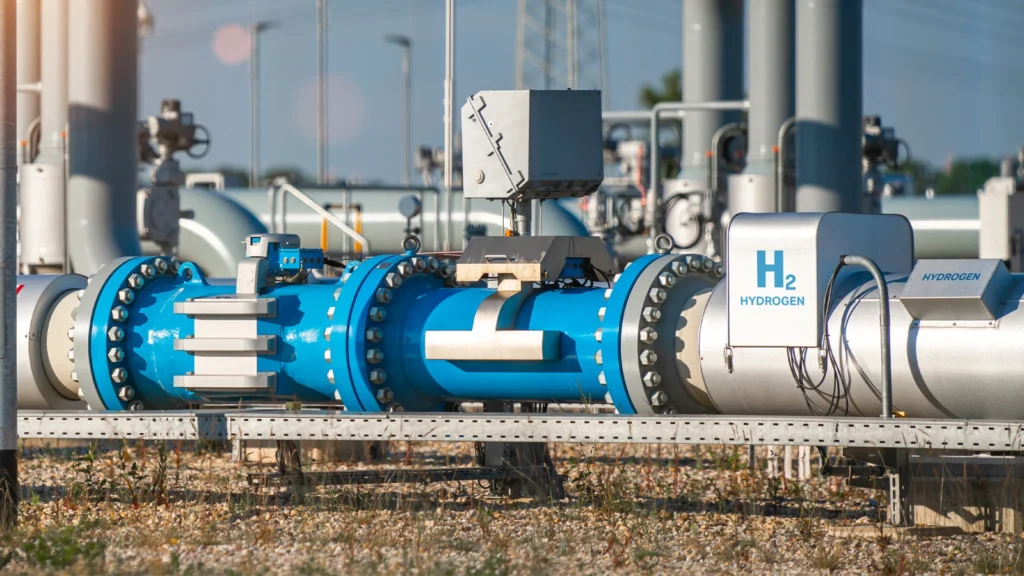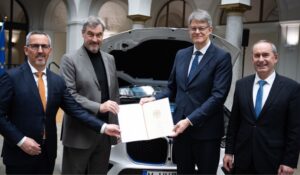Germany’s €24 billion hydrogen pipeline begins with €172 million downpayment

Germany has just made the first move in building out its national hydrogen backbone, with KfW – the government-owned development bank – transferring €172 million into the newly established H2 Amortisationskonto GmbH.
H2 Amortisationskonto GmbH, despite sounding like a Bond villain’s offshore account, is simply the company in charge of handling the money for Germany’s upcoming hydrogen core network.
Over the next seven years, Germany plans to build out 9,040 kilometres of its hydrogen pipeline – which will be a mix of repurposed natural gas lines, and new hydrogen-ready infrastructure.
These will link up producers, industrial hubs, and neighbouring countries, with the goal of a proper, fully functional, integrated hydrogen network by 2032.
Funding the future
As with most major infrastructure projects, the numbers look big because they are. KfW is putting €24 billion on the table – not as a grant, but as a loan, paid out through an amortisation account that’s been set up to support the companies building the network.
Private operators will be responsible for building and running the pipelines, and they’ll eventually earn money from the hydrogen customers using the network.
But in the early days, there won’t be enough of them to cover the cost – so to avoid stalling the rollout, the state is capping the network fees and bridging the shortfall with annual payments from the amortisation account.
The assumption is that demand will rise steadily as hydrogen production ramps up and more users come online.
Eventually, the account will be paid back in full – by 2055 at the latest, according to KfW – with later revenue helping to offset the early investment.
If repayments don’t go to plan, the Federal Government has committed to covering most of the risk – 76%, in fact – with the remaining 24% to be picked up by the network operators themselves.
As it’s a mandated transaction under German law, the government also guarantees the financing – meaning KfW itself won’t be left holding the bill if things do fall short.
Building the backbone
This core network is set to be the physical spine of Germany’s hydrogen strategy. It’s designed to move large volumes of hydrogen efficiently across the country, connecting supply with demand in a way that road transport or localised hubs can’t do alone.
This network is also intended to mesh with the wider European hydrogen infrastructure, linking in with cross-border pipelines and enabling international trade in green molecules.
The Federal Network Agency approved the joint application from gas transmission operators last October, and with the first funding now in place, the project has moved beyond strategy and into the delivery phase.
The core network will also play a key role in making hydrogen commercially viable for energy-intensive sectors – think steel, chemicals, shipping, and heavy transport – where electrification isn’t always the right tool for the job.
By putting the infrastructure in first, Germany is hoping to eliminate one of the biggest bottlenecks for hydrogen uptake: lack of access. Or, the chicken and the egg, to quote an industry cliche.
Early days, but momentum’s building
No one’s pretending this is all going to happen overnight, but Germany’s approach – build the infrastructure first, support it through the initial ramp-up, and set up a framework for long-term repayment – is one of the more mature national strategies in play right now.
There are still plenty of moving parts, too. Hydrogen production needs to scale up to meet expected demand, and industrial users will have to make investment decisions of their own.
But as far as state-backed commitment goes, this is about as clear a signal as it gets.
Germany’s not just hoping hydrogen will play a role in its energy future – it’s laying the groundwork now to make sure the network is ready when the demand arrives.
First €172 million down. The rest to follow. But the pipeline – literally and figuratively – is starting to take shape.












